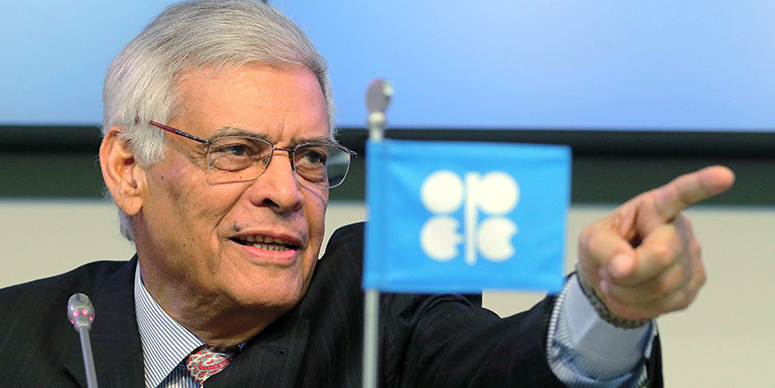OPEC Warns: No Drilling Now, No Oil Supply Later
HOUSTON—Oil supply was on everyone’s lips at the 35th annual IHS Energy CERAWeek in Houston: too much now is crushing prices, but maybe there will not be enough down the road when demand has grown.
A variety of speakers, including the secretary-general of OPEC, the head of the International Energy Agency (IEA) and corporate CEOs, warned that in this downturn the dramatic lack of investment in drilling will come back to haunt the world’s consumers later, presaging higher oil prices to come. More dialogue is needed between consumers and producers, they said.
“No investment now, no supply in the future. It’s that simple,” declared Abdalla Salem el-Badri, secretary-general of OPEC, during the opening plenary session of IHS CERAWeek.
“The lower the oil price, the less attention is paid to oil security,” said Fatih Birol , executive director of the IEA. The agency debuted its new medium-term oil outlook report at the conference, where Birol warned that just to offset natural declines every year, the world has to find an incremental 3 million barrels of oil per day (MMbbl/d), plus another 1 MMbbl/d to satisfy rising global demand.
Daniel Yergin, chairman of IHS CERAWeek and vice chair of IHS Energy, began the session by asking both men that most crucial but simple question: What’s happening with the oil price?
OPEC’s el-Badri said nobody can tell what’s going on in the market, and that OPEC did not anticipate the price to fall as low as it has. “For several years we enjoyed a high price, as high as $100 and sometimes more, but this was a high price that was not sustainable. Let’s see what happens. ”OPEC, we are willing to cooperate to find a solution,” he added.
When Yergin asked the secretary-general if he talks to other producers about cooperation, El-Badri replied, “we talk to the EU, we talk to the IEA, we talk to Russia, India—we talk to almost everybody except the United States. But we want to talk to you—let’s have a dialogue.” Laughter ensued in the hall, as Yergin pointed out that some U.S. government officials were in the audience.
Dialogue with the world’s major producers is ongoing, el-Badri said. “OPEC started talking to Mexico, to Brazil, to Russia, to Oman…just to see how we could come up with a solution. We met twice. Let us just freeze production now and maybe we can take other steps in the future … I don’t know; let’s see how things develop,” el-Badri said.
Although OPEC represents producers and the IEA represents consumer nations—two sides across from each other at the same table—Birol said the lines have blurred.
“Let me point out something,” he said. “In the last five years, oil production growth was five times more in the consuming nations than it was in the producing ones [such as in U.S. shales], and consumption rose more in the producing nations [such as in the Middle East] than it did in the consuming nations.
“So the lines are no longer black and white between the consuming countries and the producing countries.”
The IEA sees a slow rebound in price through 2017 or 2018—but does not think it will get back to $80/bbl until 2020, Birol said, citing the huge storage overhang “that’s going to put big pressure on the oil market in 2016.”
El-Badri agreed, saying this downturn is different than prior ones because it is supply-driven. “I hope we can solve this problem by 2017, but this cycle is very nasty.”
Both men cautioned that if oil prices come back up strongly, production in the higher-cost areas such as U.S. shales will come back—possibly capping the oil price once again. “With shale oil in the U.S., I don’t know how we are going to live together,” el-Badri admitted. “I agree that U.S. shale will come back—it’s very difficult to cut production. Normally when prices are so low, companies—and countries—start to increase their production to compensate. So let’s freeze production and wait three or four months.
“If the price of oil goes up by $10, then in two or three months the price will go down by $20 or $30,” el-Badri added.
The IEA is putting a lot of emphasis on energy efficiency and diversity of oil supply for its members because it believes oil security is very important in the years to come, Birol said. “Even though we see a lot of oil coming from the U.S., the Middle East is, and will still be, the heart of global oil production.”
For the Middle East, however, the situation has changed, according to el-Badri, who advised producers there to diversify their income stream; it is no longer prudent to depend only on oil and gas revenues.

 石油圈
石油圈
